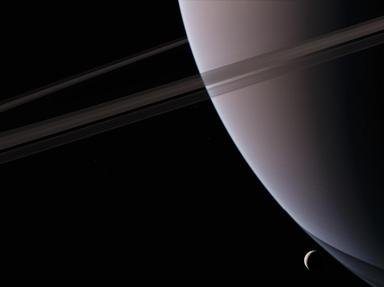Quiz Answer Key and Fun Facts
1. Much of what we know about Saturn and its rings we learnt from an unmanned spacecraft sent to Saturn in 1997. The spacecraft was named after two scientists who had made important discoveries about Saturn. What's the name of this spacecraft?
2. What do Saturn's rings consist of?
3. The rings of Saturn are so thin that if you could shrink them to a width of 1 km they would be sharper than the sharpest razor.
4. The further the rings are away from Saturn, the faster they orbit around it.
5. Which moon of Saturn causes the Cassini Division?
6. What are the small moons within the ring system that keep the rings in place called?
7. The faint F ring has a spiral shape because of the gravitational force exerted by one of Saturn's moons. What is the name of this moon, named after a character from Greek myth who stole fire from the gods?
8. What do we call the lines on Enceladus's southern pole that are hotter than the other areas of this moon?
9. How is the E ring formed?
10. Is Saturn the only planet in our solar system that has rings?
Source: Author
AlonsoKing
This quiz was reviewed by FunTrivia editor
rossian before going online.
Any errors found in FunTrivia content are routinely corrected through our feedback system.
